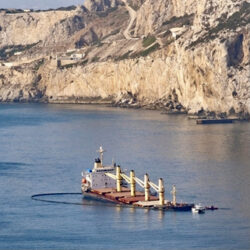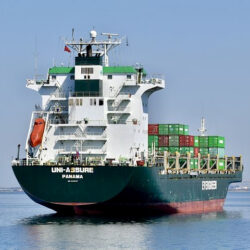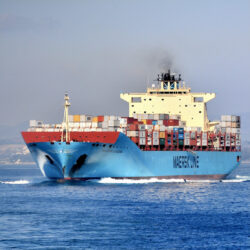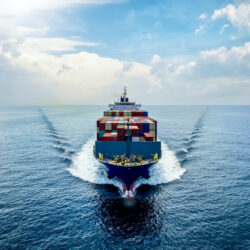Decline in container shipping poses threat to safety and vital investments

The falling freight rates in container shipping pose a threat to future investments and could affect maintenance levels and risk management budgets, according to insurer Allianz Global Corporate & Specialty SE (AGCS) in its Safety & Shipping Review 2023.
Following the post-pandemic boom in container shipping, economic and geopolitical uncertainty and falling demand have affected freight rates. In April 2023, the cost of shipping a container between Asia and the US or Europe was more than 80% lower than a year earlier, and costs on some routes are now even at pre-pandemic levels.
Although freight rates have fallen, new ships ordered during the boom are now also being delivered, adding to the existing overcapacity. In March the Mediterranean Shipping Company received the delivery of two megaships: the MSC Tessa and MSC Irina. At more than 24,000 TEU each, these are among the largest container ships in the world. This was preceded in February by the delivery of the OOCL Spain with 24,118 TEU capacity, the first of six ships under construction for OOCL.
Growth in global container fleet
The Baltic and International Maritime Council (BIMCO) predicts that weak demand for container ships will outstrip supply by 2023, putting downward pressure on freight rates and the value of secondhand ships until next year.” The shipping authority forecasts negative demand growth in the first half of 2023, with a recovery in the second half leading to overall demand growth of 1-2% in 2023, followed by 5-6% in 2024.
The global container fleet is expected to grow by 6.3% in 2023 and 8.1% in 2024. Capacity will increase due to the easing of port congestion and the delivery of new ships ordered during the past two-year boom period. BIMCO forecasts that 4.9 million extra TEUs will be delivered in 2023 and 2024, representing a 19% increase in fleet size since the beginning of 2023.
“The question is whether this decline, together with the prospect of an economic downturn, will impact maintenance and risk management budgets. Prior downturns have impacted these, leading to losses and an uptick in machinery damage incidents,” states Justus Heinrich, Global Product Leader Marine Hull at AGCS.
Vital investments in jeopardy
Lower freight rates could also jeopardize vital investments in fire safety and decarbonization, according to Captain Rahul Khanna, Global Head of Marine Risk Consulting at AGCS. “We are on the eve of the delivery of new, larger ships at a time when the industry is already under pressure from lower freight rates. This may be good news for cargo owners, but not for container shipping,” he says.
“Record profits for the container industry have supported innovation in areas such as decarbonization, alternative fuels and fire detection and prevention. If the market comes under pressure, there is a risk that such initiatives will lose momentum. We would hate to see safety initiatives, especially in terms of the improvements we hope to see in container-ship design – and in roll-on/roll-off and fire safety in particular – take a back seat.”










